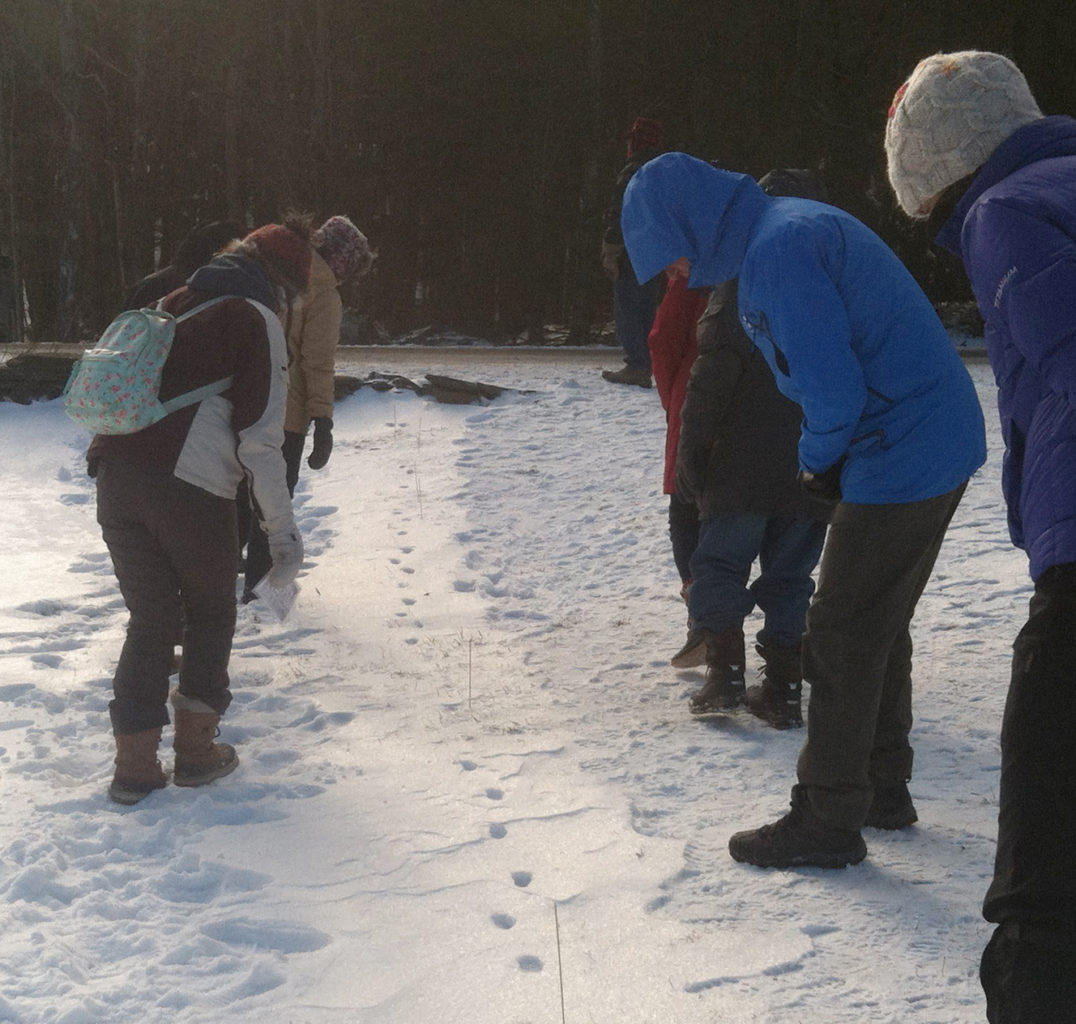Never Just a Track
by Dave Muska, NBNC Teacher/Naturalist
Editor’s Note: Dave will be leading an Introductory Wildlife Tracking workshop this Sunday, Feb. 10. Just four spots remain; learn more and register here!
It’s nearly 0° F in the early morning light. Alongside the edge of the dirt road, between the tall plowed banks of snow and last night’s tire tracks, lies a clean line of prints, animal tracks, one after another in a clear and focused pattern.
I see my breath in big puffs and feel it freeze on my beard as I walk along the tracks, searching. The snow squeaks with each step under my mukluks.
It has been said that the art of tracking was the first science. Perhaps one of the first collections of knowledge passed on from generation to generation of hunter-gatherers; an observable and measured knowledge base that can be examined, acknowledged, and disputed in the presence of peers. The questions are laid out across the land:
Who is this animal that made these tracks?
What did it do here, at this pattern?
Why was it here?
How old are theses tracks? When was it here? Will it return?
And so on.
The ability to track both fed and protected countless generations. Our lives were informed by these marks. I’m often reminded of this ancestral history in the readiness of children to see patterns and shapes in the clouds, wood grain, or icy puddles. I, too, can see giraffes, mice, and dragons in the sky!
Connecting shapes and patterns together into a story allows people to become keen observers. These keen observers begin to catalog, often unknowingly, sets of information. The shapes, colors, smells, and sounds fold onto themselves as patterns until finally they are relating to each other and recognizable.
A partial print registered in soil or seen as a smudge is sometimes the very best we as trackers are afforded.
Later that night, as I unwind for bed, the cold hard details and images of the tracks I encountered earlier alight and give way to a far richer story.
In my mind I see the red fox bounding through the deep snow amidst the tall and dark trunks of maples, eastern hemlock, birch, and beech. The fox is moving towards me under the twinkling of winter starlight. It emerges and makes a hard right down the road. Snowflakes tumble from its russet coat and bushy tail, ears alert and almost playful. Its body moves much more easily as it trots along the edge of the road. It begins to slow as it approaches a football-sized chunk of snow. The fox pauses and rests its right rear foot ever so briefly on the obstacle, urinating to mark its territorial range.
The fox quickly carries on down the road to the neighbor’s compost for a bite to eat. As it forages through the frozen heap it occasionally looks up and listens intently, still as a statue. Its breath tumbles past its whiskers into the cold starry night.

Editor’s Note: Dave will be leading an Introductory Wildlife Tracking workshop on Sunday, Feb.10. Just four spots remain; learn more and register here!

